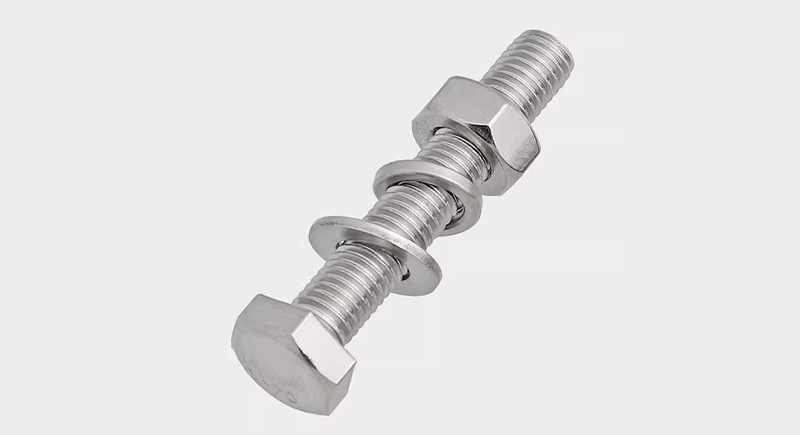VIDEO & CENTER

In general, we analyze bolt breakage from the following four aspects:
First, the quality of the bolt
Second, the pre-tightening torque of the bolt
Third, the strength of the bolt
Fourth, the fatigue strength of bolts

In fact, the vast majority of bolt breakage is broken because of loosening, and it is broken due to loosening. Because the situation of bolt loosening break and fatigue break is roughly the same, finally, we can always find the reason from the fatigue strength, in fact, the fatigue strength is so large that we can not imagine, the bolt in the use of the process of fatigue strength.
01
Bolt breakage is not due to the tensile strength of the bolt:
Taking an M20×80 8.8 high strength bolt as an example, its weight is only 0.2 kg, and its minimum tensile load is 20 tons, up to 100,000 times its own weight, under normal circumstances, we will only use it to tighten 20 kg parts, but also only use one thousandth of its maximum capacity. Even if the role of other forces in the equipment, it is impossible to break through the weight of the parts thousands of times, so the tensile strength of the threaded fasteners is sufficient, and it is impossible to damage because of the insufficient strength of the bolts.
02
The fracture of the bolt is not due to the fatigue strength of the bolt:
Threaded fasteners can be loosened only 100 times in the transverse vibration loosening experiment, and need to be repeatedly vibrated one million times in the fatigue strength experiment. In other words, threaded fasteners are loosened when they use 1/10,000 of their fatigue strength, and we only use 1/10,000 of their large capacity, so the loosening of threaded fasteners is not because of bolt fatigue strength.
03
The real cause of threaded fastener damage is loosening:
After threaded fasteners are loose, huge kinetic energy mv2 is generated. This huge kinetic energy directly acts on fasteners and equipment, resulting in fastener damage. After fasteners are damaged, equipment cannot work in normal state, which further leads to equipment damage.
Fasteners subjected to axial forces, the threads are broken, and the bolts are pulled.
For fasteners subjected to radial forces, the bolts are cut and the bolt holes are punched into ellipses.
- The selection of thread anti-loosening with excellent anti-loosening effect is the fundamental solution to the problem:
Take a hydraulic hammer, for example. The weight of the GT80 hydraulic hammer is 1.663 tons, and its side plate bolts are 7 sets of 10.9 M42 bolts, each bolt has a tensile force of 110 tons, and the preload force is calculated by taking half of the tensile force, and the preload force is as high as three or four hundred tons. But the bolt will also break, now prepare to change the M48 bolt, the root cause is that the bolt loosening can not be solved.
When the bolt is broken, the most easy conclusion to draw is that the strength is not enough, so most of them use the method of increasing the bolt diameter strength grade. This method can increase the pre-tightening force of the bolt, its friction has also been increased, of course, the anti-loosening effect can also be improved, but this method is actually a non-professional method, its investment is too large, the benefit is too small.
In short, the bolt is: "not loose, loose, break."
Cause analysis of bolt loosening
The thread connection is designed according to the self-locking condition: ψ ≤ρv, the friction generated in the thread pair causes the bolt to self-lock and tighten the bolt, so the connection will not loose under static load. However, under shock, vibration, variable load and large temperature change, the friction force F of the spiral pair will decrease or disappear instantaneously. If this phenomenon occurs repeatedly, the connection bolt will gradually loosen. After the screw fastener is loosened, the kinetic energy mv2 generated, the fastener under the action of axial force, the thread is damaged, and the bolt is pulled off. Under the radial force of the fastener, the bolt is cut, the bolt hole is broken.
Bolt loosening principle: limit the relative movement between thread pairs, or increase the difficulty of relative movement.
Introduction of common anti-loosening methods (briefly introduce the commonly used anti-loosening methods, and will focus on some new and unique anti-loosening methods and their anti-loosening principles)














